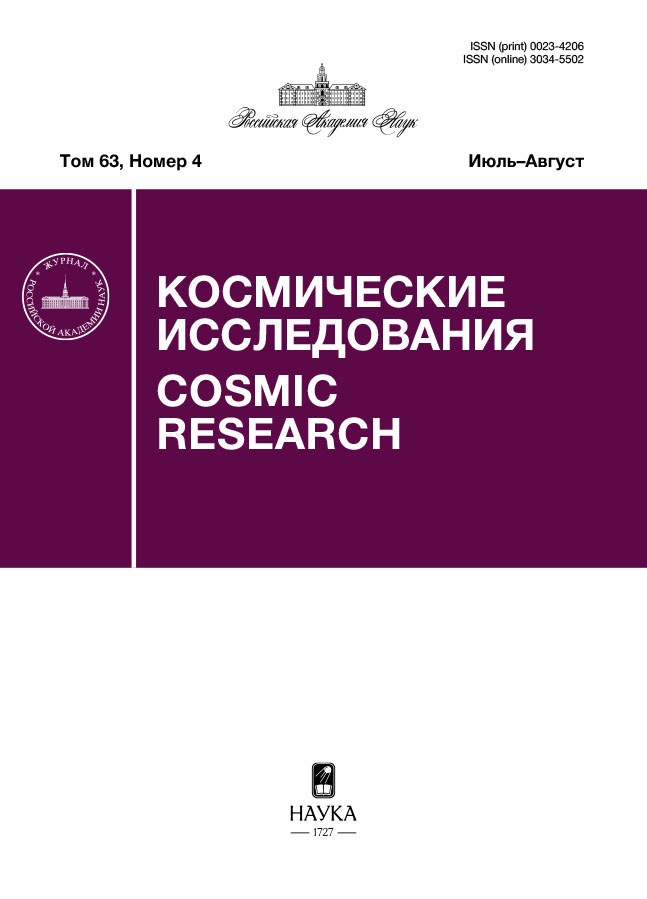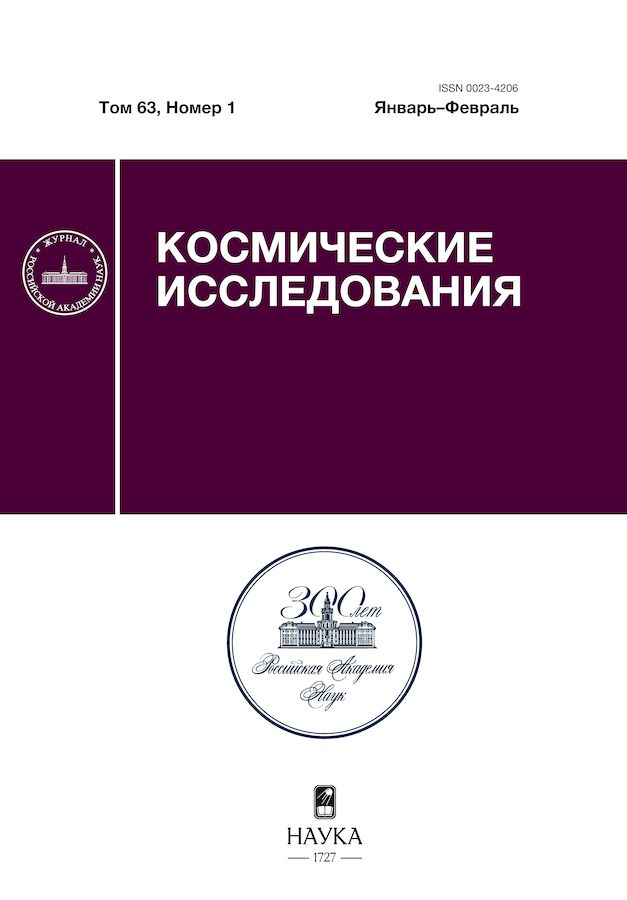Classification of isolated substorms taking into account generation conditions and phase characteristics
- Authors: Barkhatov N.A.1, Revunov S.E.1, Barkhatova O.M.2, Revunova E.A.2, Vorobjev V.G.3, Yagodkina O.I.3
-
Affiliations:
- Nizhny Novgorod State Pedagogical University (Minin University)
- Nizhny Novgorod State University of Architecture and Civil Engineering
- Polar Geophysical Institute
- Issue: Vol 63, No 1 (2025)
- Pages: 79–88
- Section: Articles
- URL: https://rjsocmed.com/0023-4206/article/view/682928
- DOI: https://doi.org/10.31857/S0023420625010087
- EDN: https://elibrary.ru/HEAURK
- ID: 682928
Cite item
Abstract
A neural network classification of isolated substorms was performed, taking into account the features characterizing the peculiarities of generation of different substorm phases. For this purpose, the following classification features were chosen: the duration of the nucleation phase, the development phase, the recovery phase, and the duration of the substorm as a whole, as well as the behavior of the Bz component of the interplanetary magnetic field (IMF). The latter feature is understood as the southward rotation of the Bz component of the IMF, which determines the beginning of the nucleation phase of the substorm. These features are adopted as input series for the self-learning neural network models being created. The result of the classification neural networks is the formation of graphical images of the set of the above classification features, each of which contains information on the duration of the phases of the considered substorms. Classification neural network experiments allow us to divide substorms into five classes. The physical features of the selected classes consist in the cause-and-effect relationships between the duration of substorm phases and solar wind parameters and MMP features.
Full Text
About the authors
N. A. Barkhatov
Nizhny Novgorod State Pedagogical University (Minin University)
Author for correspondence.
Email: nbarkhatov@inbox.ru
Russian Federation, Nizhny Novgorod
S. E. Revunov
Nizhny Novgorod State Pedagogical University (Minin University)
Email: nbarkhatov@inbox.ru
Russian Federation, Nizhny Novgorod
O. M. Barkhatova
Nizhny Novgorod State University of Architecture and Civil Engineering
Email: nbarkhatov@inbox.ru
Russian Federation, Nizhny Novgorod
E. A. Revunova
Nizhny Novgorod State University of Architecture and Civil Engineering
Email: nbarkhatov@inbox.ru
Russian Federation, Nizhny Novgorod
V. G. Vorobjev
Polar Geophysical Institute
Email: nbarkhatov@inbox.ru
Russian Federation, Apatity
O. I. Yagodkina
Polar Geophysical Institute
Email: nbarkhatov@inbox.ru
Russian Federation, Apatity
References
- Бархатов Н.А., Воробьев В.Г., Ревунов С.Е., Ягодкина О.И. Проявление динамики параметров солнечного ветра на формирование суббуревой активности // Геомагнетизм и аэрономия. 2017. Т. 57. № 3. С. 273–279.
- Бархатов Н.А., Громова Л.И., Дремухина Л.А. и др. Учет энергетического бюджета магнитосферы в задаче классификации источников магнитосферной активности // Известия Российской Академии наук. Серия физическая. 2006. Т. 70. № 10. C. 1535–1537.
- Воробьев В.Г., Ягодкина О.И., Антонова Е.Е., Зверев В.Л. Влияние параметров плазмы солнечного ветра на интенсивность изолированных магнитосферных суббурь // Геомагнетизм и аэрономия. 2018. Т. 58. № 3. С. 311–323.
- Vorobjev V.G., Antonova E.E., Yagodkina O.I. How the intensity of isolated substorms is controlled by the solar wind parameters // Earth, Planets and Space. 2018. V. 70. Iss. 148. https://doi.org/10.1186/s40623-018-0922-5
- Lynch B., Zurbuchen T., Fisk L. et al. Internal structure of magnetic clouds: Plasma and composition // J. Geophys. Res. 2002. V 08. Iss. A6. Art.ID. 1239.
- Newell P.T., Sotirelis T., Liou K. et al. A nearly universal solar wind-magnetosphere coupling function inferred from 10 magnetospheric state variables // J. Geophys. Res. 2007. V. 112. Art.ID. A01206.
- Crooker N.U., Kahler S.W., Gosling J.T. et al. Evidence in magnetic clouds for systematic open flux transport on the Sun // J. Geophys. Res. 2008. V. 113. Art.ID. A12107. https://doi.org/10.1029/2008JA013628
- Kilpua E.K.J., Li Y., Luhmann J.G. et al. On the relationship between magnetic cloud field polarity and geoeffectiveness // Ann. Geophys. 2012. V. 30. P. 1037–1050. https://doi.org/10.5194/angeo-30-1037-2012
- Бархатов Н.А., Воробьев В.Г., Ревунов С.Е. и др. Суббуревая активность и ориентация фронта ударной волны межпланетного магнитного облака // Геомагнетизм и аэрономия. 2019. Т. 59. № 4. С. 427–436.
- Бархатов Н.А., Ревунов С.Е. Нейросетевая классификация разрывов параметров космической плазмы // Солнечно-земная физика. 2010. Вып. 14(127). С. 42–51.
- Barkhatov N.A., Vorobjev V.G., Revunov S.E. et al. Neural network classification of substorm geomagnetic activity caused by solar wind magnetic clouds // J. Atmospheric and Solar–Terrestrial Physics. 2020. V. 205. Art.ID. 105301.
- Бархатов Н.А., Воробьев В.Г., Ревунов С.Е. и др. Нейросетевая классификация причинно-следственной связи суббуревой активности со структурными элементами магнитных облаков солнечного ветра // Известия Российской Академии наук. Серия физическая. 2022. Т. 86. № 3. С. 329–334.
Supplementary files



















